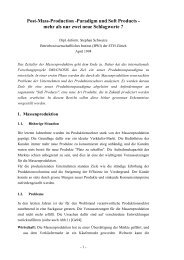The China Venture
The China Venture
The China Venture
Create successful ePaper yourself
Turn your PDF publications into a flip-book with our unique Google optimized e-Paper software.
much business data in <strong>China</strong> and the speed of change and development in the environment.<br />
<strong>The</strong>re, many plans will prove inadequate and unable to reflect actual developments. In this<br />
respect, a large pool of applicable and reliable information from efficient sources will be<br />
particularly helpful, as it helps to differentiate between discrepancies caused by slower<br />
development of an otherwise well designed business and those caused by operational or<br />
strategy related flaws of the company.<br />
An organisational structure for gathering information and feedback together with processes to<br />
periodically re-evaluate the business, should form the basis for post-entry strategic success.<br />
However, these structures and processes can only be utilised to their fullest if they go hand in<br />
hand with the will, determination, and power to actively reposition the Chinese business if<br />
necessary.<br />
<strong>The</strong> will and determination will have to be achieved by appropriate internal monitoring and<br />
management processes. <strong>The</strong> power to do so, however, is often won or lost during the initial<br />
phase of negotiations with one’s partners. If the joint venture partner has a significant share in<br />
the ownership of the project, strategic change may be very difficult to achieve. This may<br />
result, as the examples below will show, in outright failure of the whole project and total loss<br />
of the investment. For this reason, the possibility for significant strategic repositioning needs<br />
to be taken into account already in the business formation phase.<br />
<strong>The</strong> need to reposition one's activities will be larger in <strong>China</strong> than in a more stable business<br />
environment. <strong>The</strong> challenges faced in trying to achieve such goals may easily be<br />
underestimated. <strong>The</strong> following examples and case-studies will show how the need for re-<br />
evaluation and repositioning can arise in reality. Some of the dire consequences of the lack of<br />
planning for exit strategies can surely be avoid ed by openly discussing and accounting for<br />
various developments that might make strategic change necessary.<br />
4.1.2 Case studies<br />
4.1.2.1 Luxury goods company in <strong>China</strong> (LGC)<br />
LGC is a family owned company supplying highly priced fashion jewellery to a world market.<br />
With around 9200 employees the company generates a turnover of around 1.4 billion CHF. It<br />
operates globally with more than 70 group companies, most of which are sales offices. By the<br />
early 1990s, the company operated two production facilities in Asia. One of them in Thailand<br />
142






